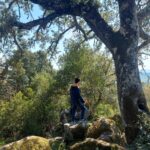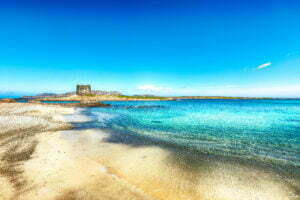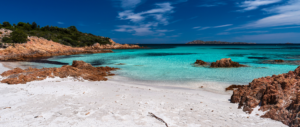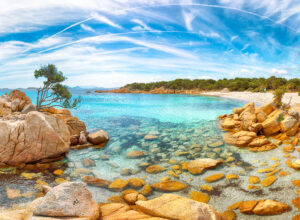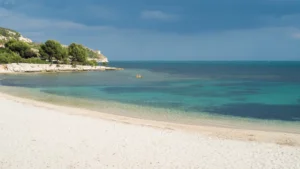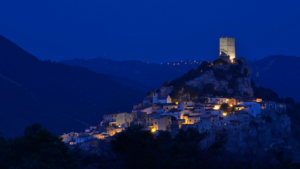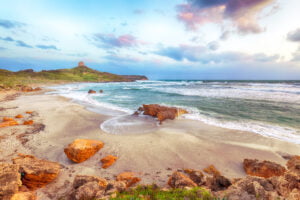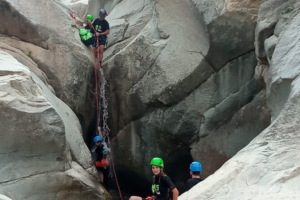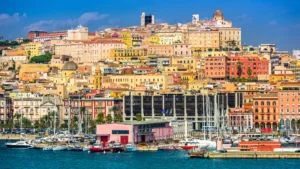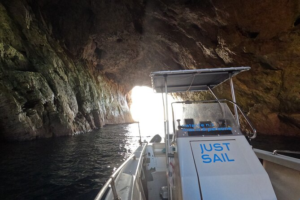Where is Sardinia?
The Short Answer:
Sardinia is the second largest island in Italy, located in the middle of the Mediterranean Sea. It is immediately to the south of Corsica, which belongs to France. Sardinia is situated between Spain and Italy, about 200 km from the coast of Italy and roughly halfway between Northern Italy and Northern Africa. Here you can see where Sardinia is located in the map:
Overview and What you Will Learn
- Sardinia is Italy’s second-largest island, located in the Mediterranean, easily reachable from major European cities.
- It’s renowned for stunning beaches, crystal-clear seas, and a blend of European and African cultural influences.
- The island’s geography features a dramatic interior with mountains and a rugged coastline, offering diverse landscapes.
- Sardinia’s history is marked by ancient civilizations, including the Nuragic people, and a mix of various cultural influences over the centuries.
- Key attractions include pristine natural settings, rich cultural traditions, delicious cuisine, and a variety of outdoor activities.
Sardinia in Europe
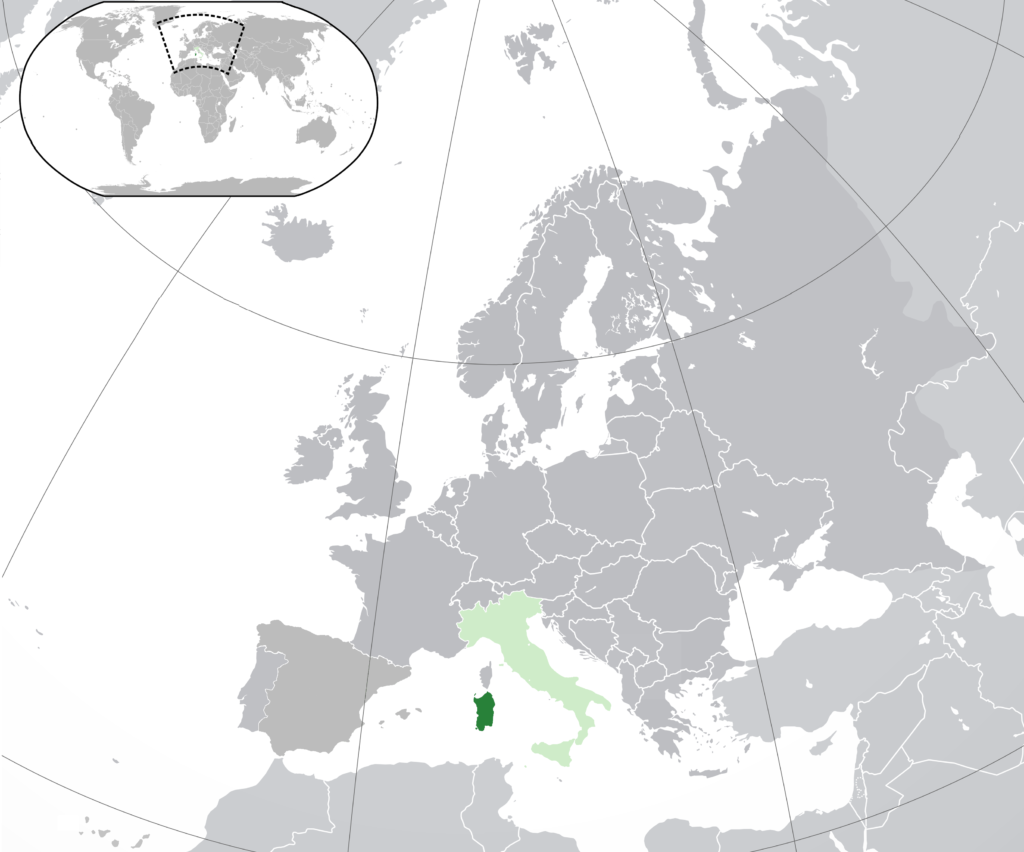

Throughout the centuries, Sardinia has been a tempting prize for various powers due to its strategic position. The island’s proximity to both Europe and Africa has resulted in a fascinating blend of cultures and influences, evident in everything from its architecture to its cuisine.
Sardinia in Italy
In 1720, Sardinia was ceded to the Duke of Savoy, who became King Victor Amadeus II of Sardinia. The Savoyard dynasty ruled Sardinia until 1861, when it became part of the newly unified Kingdom of Italy. During the Savoyard period, Sardinia was used as a base for the expansion of the kingdom’s territory in the Italian Peninsula.
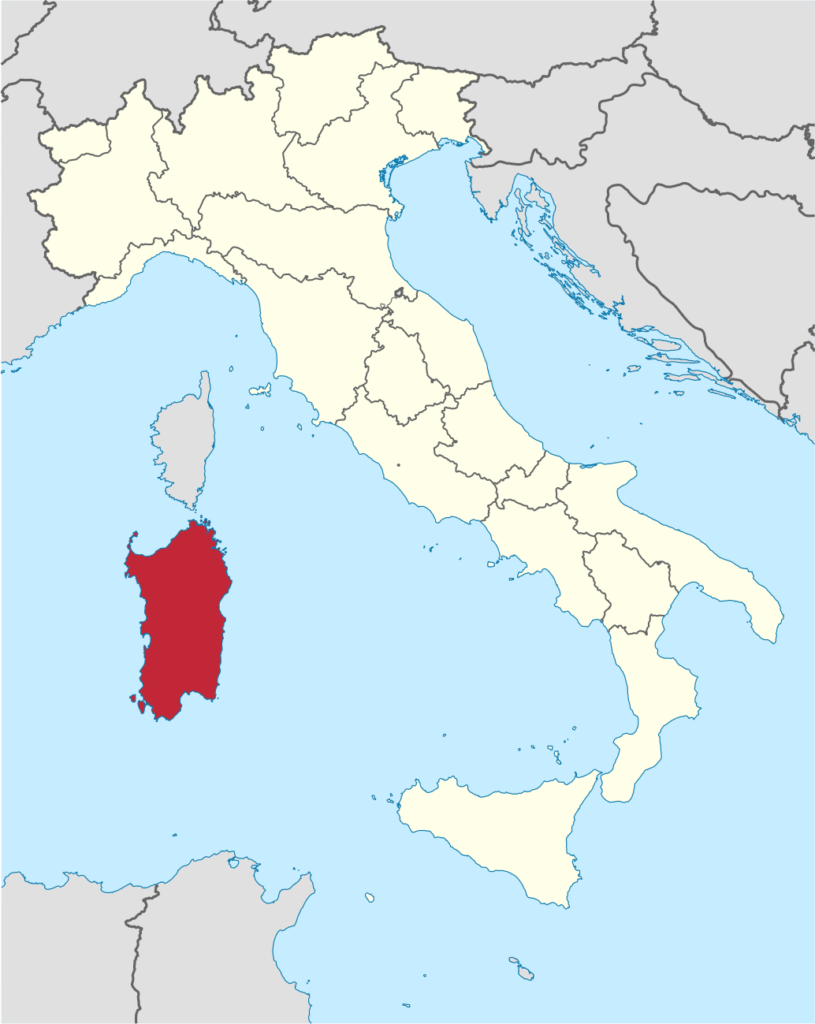

Today, Sardinia is an autonomous region of Italy, with its own regional government and legislature. The island has a population of approximately 1.6 million people and is a popular tourist destination. Sardinia’s economy is based on agriculture, fishing, and tourism, and the island is known for its traditional crafts, such as basket weaving and pottery.
Sardinia can be reached by ferry from Rome in 5 hours, from Nice in 7 hours, or by plane from several international airports.
The Mediterranean’s (Not So) Hidden Gem
Carved by the wind and kissed by the sun, Sardinia is a Mediterranean gem waiting to be discovered. Immerse yourself in the crystal-clear waters, bask in the golden sunshine, and explore a land where ancient traditions blend seamlessly with modern living.
Why Sardinia?
- Untamed Beauty: Sardinia is a feast for the senses. From the rugged coastline and pristine beaches to the majestic mountains and lush forests, the island’s natural beauty is unparalleled.
- Cultural Immersion: Sardinia is a land of ancient traditions and vibrant culture. Explore the island’s prehistoric ruins, witness traditional festivals, and savor the authentic flavors of Sardinian cuisine.
- Active Adventures: Sardinia is a paradise for outdoor enthusiasts. Hike through pristine landscapes, bike along scenic trails, or indulge in water sports like diving and snorkeling.
- Relax and Unwind: Sardinia offers a perfect escape from the hustle and bustle of everyday life. Soak up the sun on secluded beaches, pamper yourself in luxurious spas, and savor the slow pace of island life.
Ready to embark on an unforgettable journey? Sardinia awaits!
Geography
Sardinia’s soul is etched in its very geography. Unlike its flatter Italian cousin, Sicily, Sardinia boasts a dramatic mountainous interior that carves a rugged coastline along the Mediterranean. Imagine emerald peaks scraping the azure sky, their slopes carpeted with wild thyme and dotted with ancient olive groves. This is the Gennargentu massif, home to Punta La Marmora, the island’s peak at 1,834 meters (6,017 feet).
But Sardinia isn’t all about heights. The island dips and dives, sculpting a coastline that stretches for over 1,800 kilometers. In the west, long sandy beaches unfurl like golden ribbons, while the east boasts hidden coves and dramatic cliffs sculpted by relentless waves. The north reveals a jagged embrace of granite cliffs and hidden coves, while the south offers long stretches of sand dunes bordering lagoons teeming with birdlife.
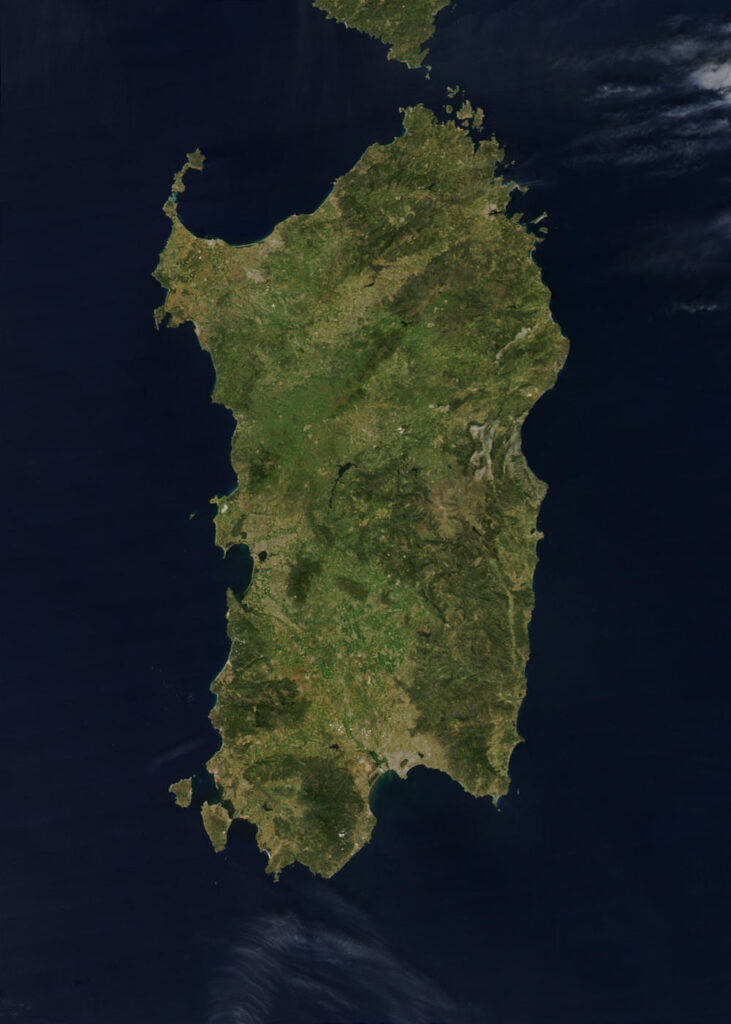
Sardinia’s temperament is shaped by the classic Mediterranean climate. Summers are long and hot, with average temperatures exceeding 30°C (86°F) and days bathed in sunshine. This is the perfect time to soak up the sun on pristine beaches and dive into the crystal-clear waters. Winters, on the other hand, are mild and wet, offering a refreshing respite and a chance to explore the island’s verdant interior. Rainfall varies depending on location, with the mountains receiving more precipitation than the coastal plains. This variation nourishes a diverse ecosystem, with wildflowers blanketing the hillsides in spring and lush forests blanketing the mountains.
So, Sardinia’s geography it’s a living, breathing entity that has shaped the island’s culture, cuisine, and even its people. From the resilient shepherds who navigate the mountainous interior to the sun-kissed fishermen who ply the turquoise waters, Sardinia’s geography has fostered a unique way of life waiting to be discovered.
History
Sardinia boasts a history as rich and layered as the geological formations that define its landscape. Evidence suggests human presence on the island stretches back to the Neolithic period, with the enigmatic Nuragic civilization emerging around 1800 BC. These Bronze Age people constructed the iconic nuraghi, beehive-shaped stone towers that still dot the Sardinian countryside, a testament to their ingenuity and a lingering mystery for archaeologists.
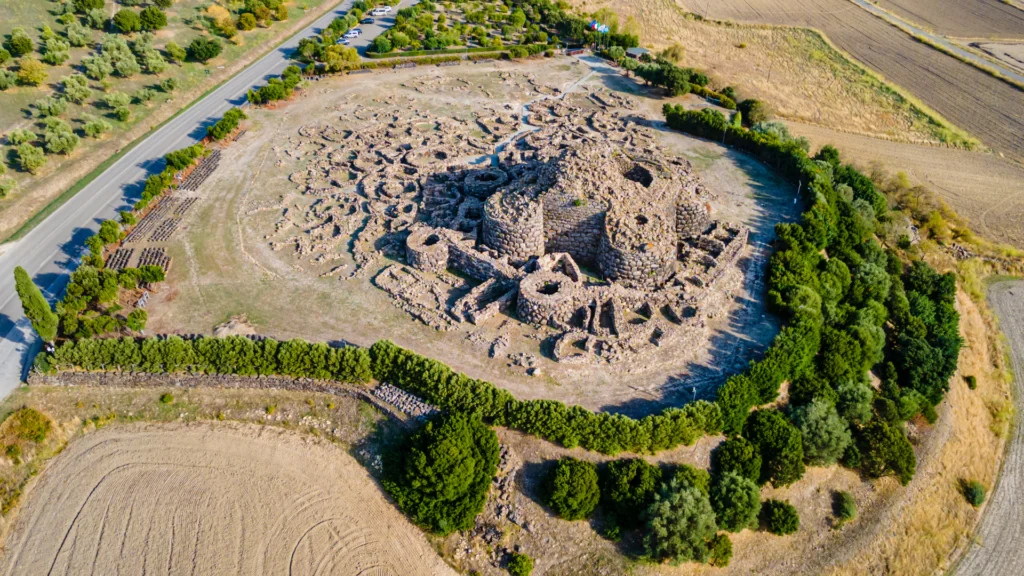

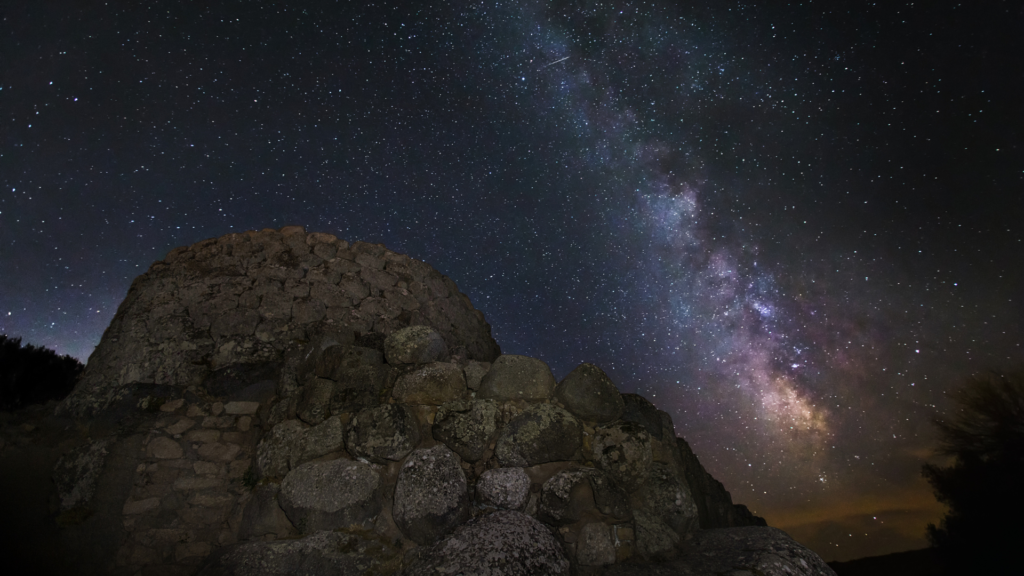

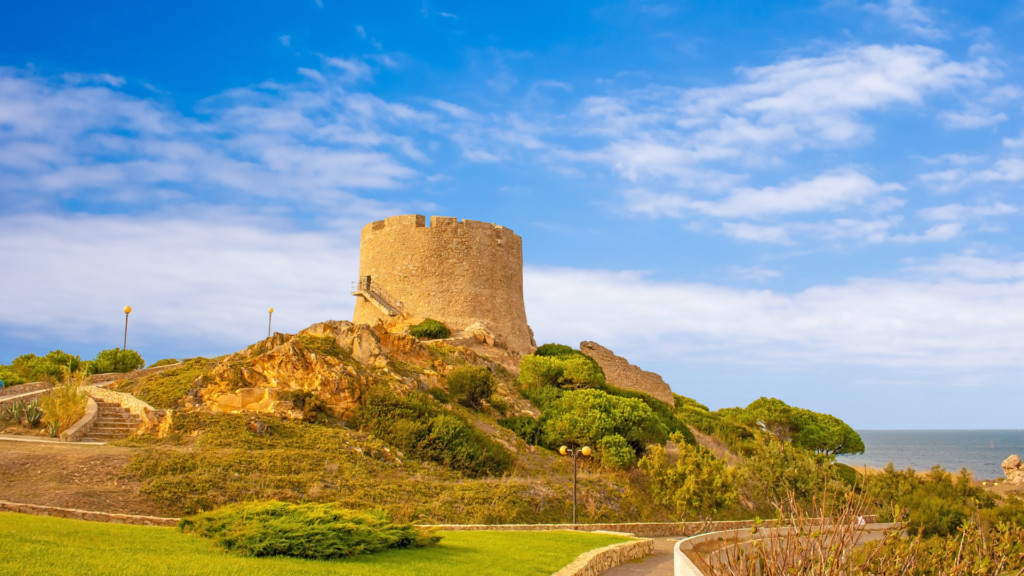

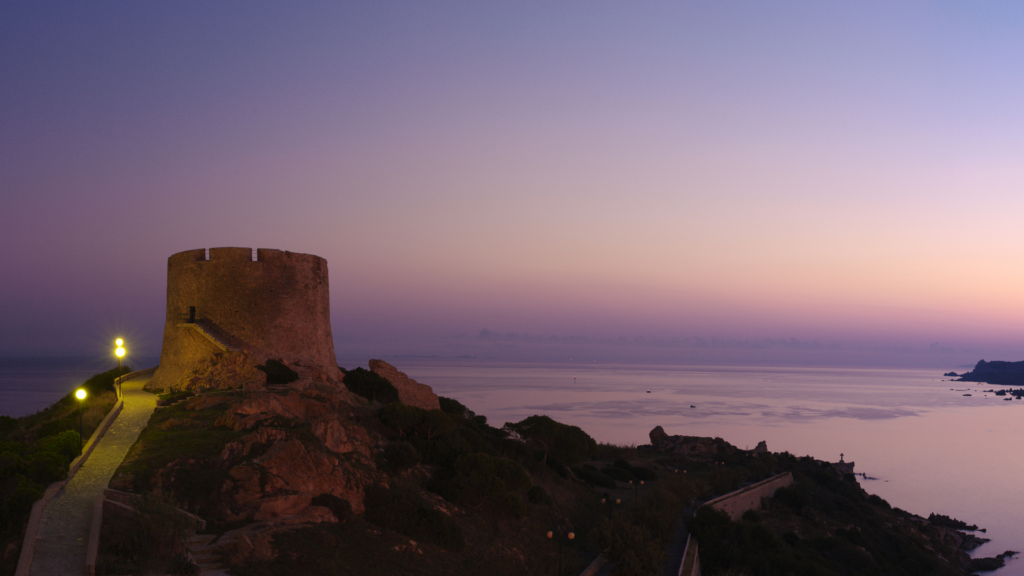

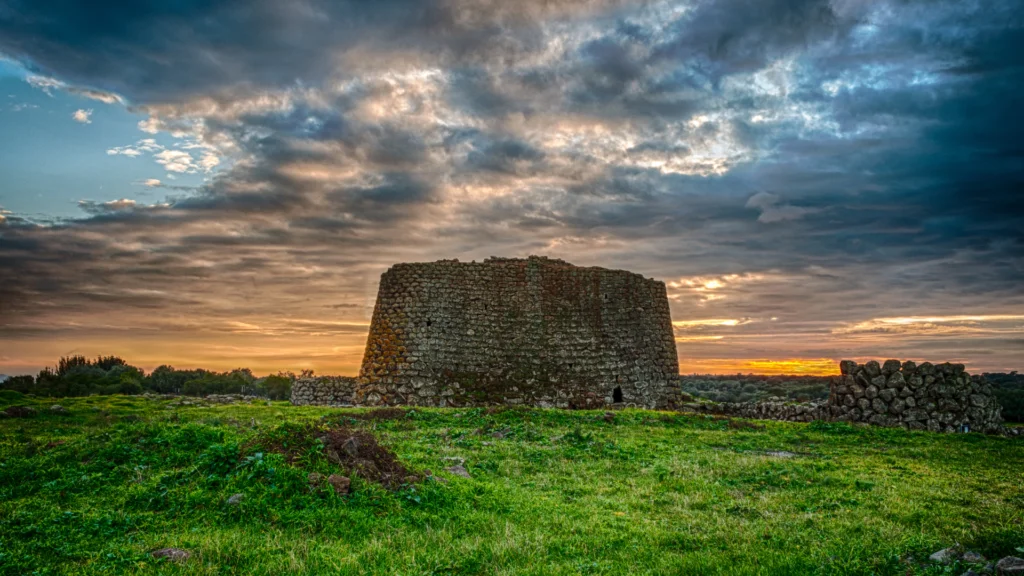

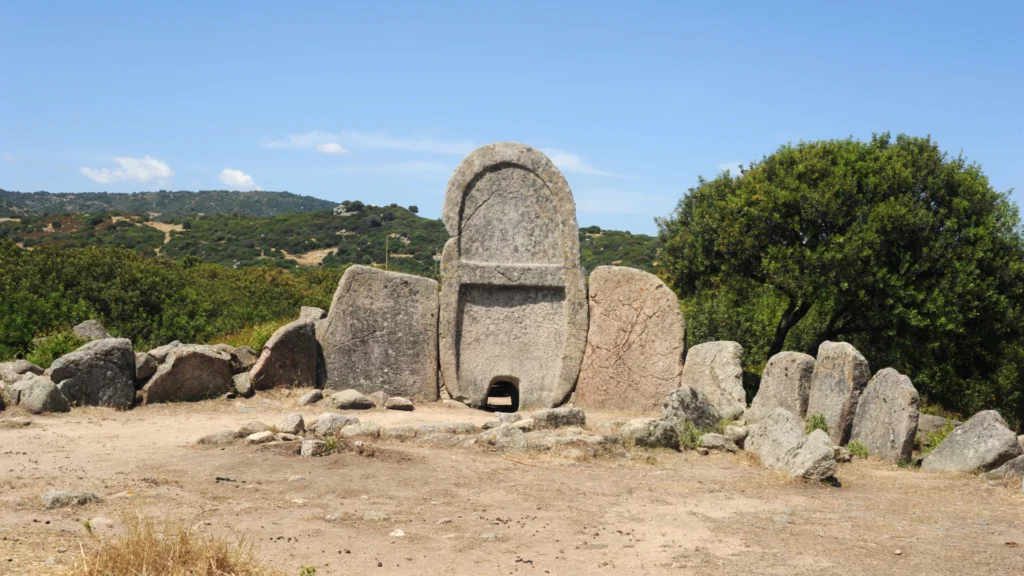

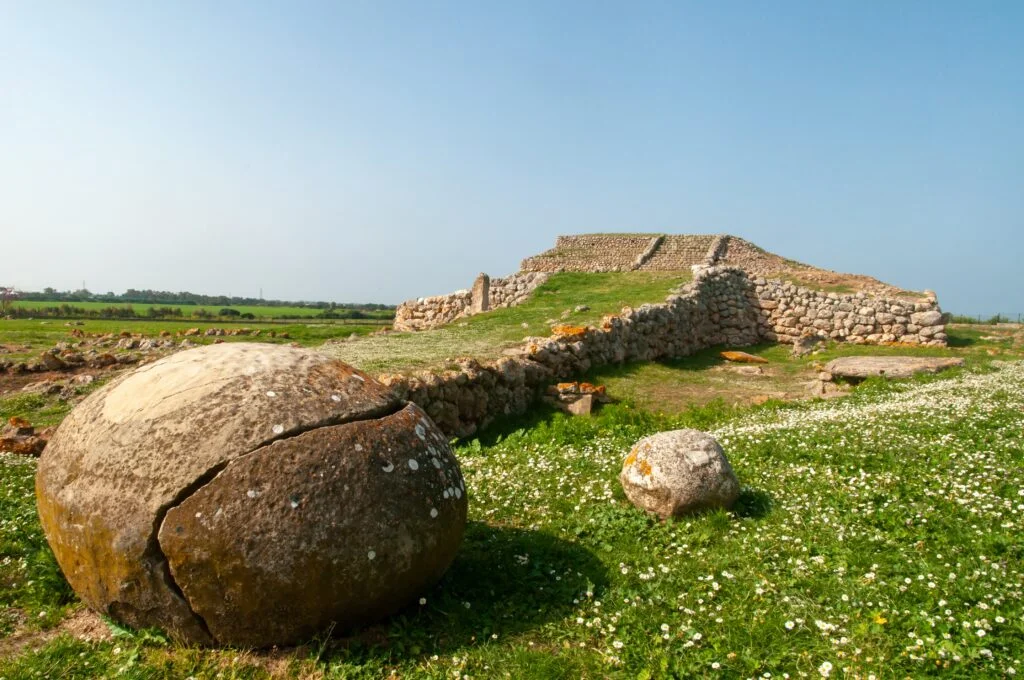

The island then became a coveted pawn in the power struggles of the ancient world. Phoenicians, Carthaginians, and Romans all vied for control, leaving their indelible marks. The Romans, who ruled for over seven centuries, brought infrastructure, law, and the Latin language, which evolved into the unique Sardinian dialects spoken today.
After the fall of Rome, Sardinia entered a period of turbulence. Byzantines, Vandals, and Arabs all took turns holding sway. The arrival of the Arabs in the 8th century marked a particularly significant chapter. While their rule was relatively short-lived, they left behind a lasting influence on language, architecture, and even some culinary traditions, like the use of saffron.
By the Middle Ages, Sardinia fractured into four independent kingdoms known as the Giudicati. This period saw a flourishing of art, literature, and a fierce sense of Sardinian identity. However, it was also a time of vulnerability, and eventually, the island fell under the control of the powerful maritime republics of Pisa and Genoa.
The Spanish Habsburgs gained dominance in the 16th century, leaving a legacy of baroque architecture and a tightening of control over the island’s resources. Finally, in 1861, Sardinia became part of the newly unified Kingdom of Italy.
Sardinia’s history is a captivating saga of conquest, resistance, and cultural exchange. Each civilization that touched the island left behind its mark. Exploring these historical layers is an essential part of experiencing the true essence of this remarkable island.
Culture
Sardinia’s culture is a vibrant mosaic, each tile a piece of the island’s rich history and rugged geography. From the haunting melodies of the canto a tenore (a polyphonic singing style) to the pulsating rhythms of the ballu sardu (a traditional folk dance), Sardinian culture pulsates with a life of its own.
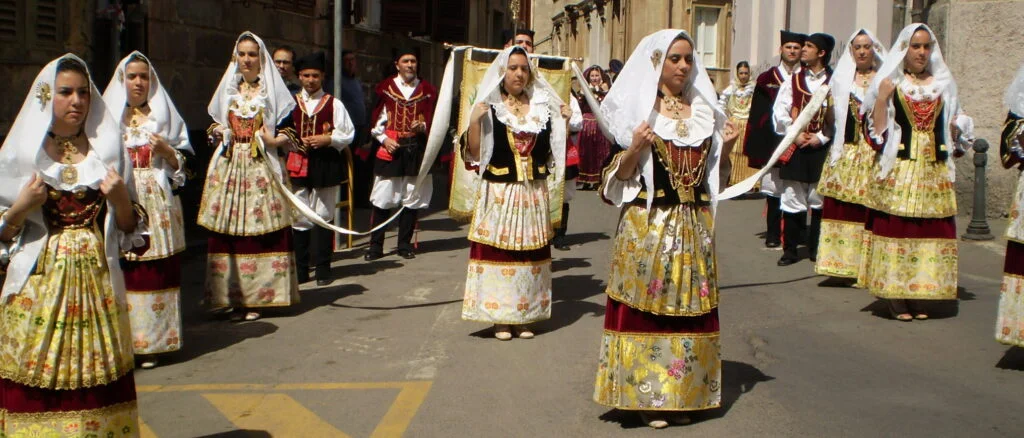

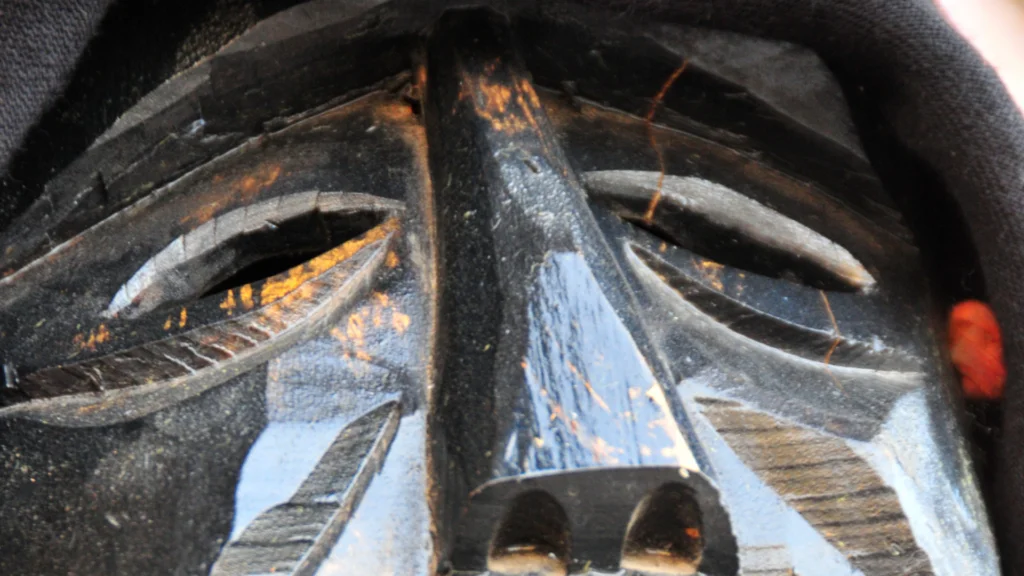

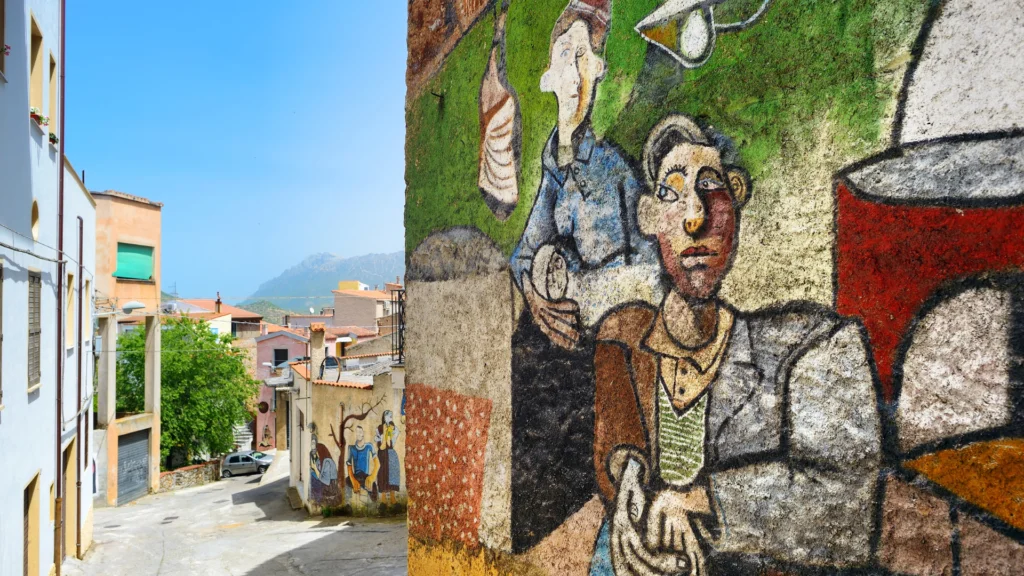

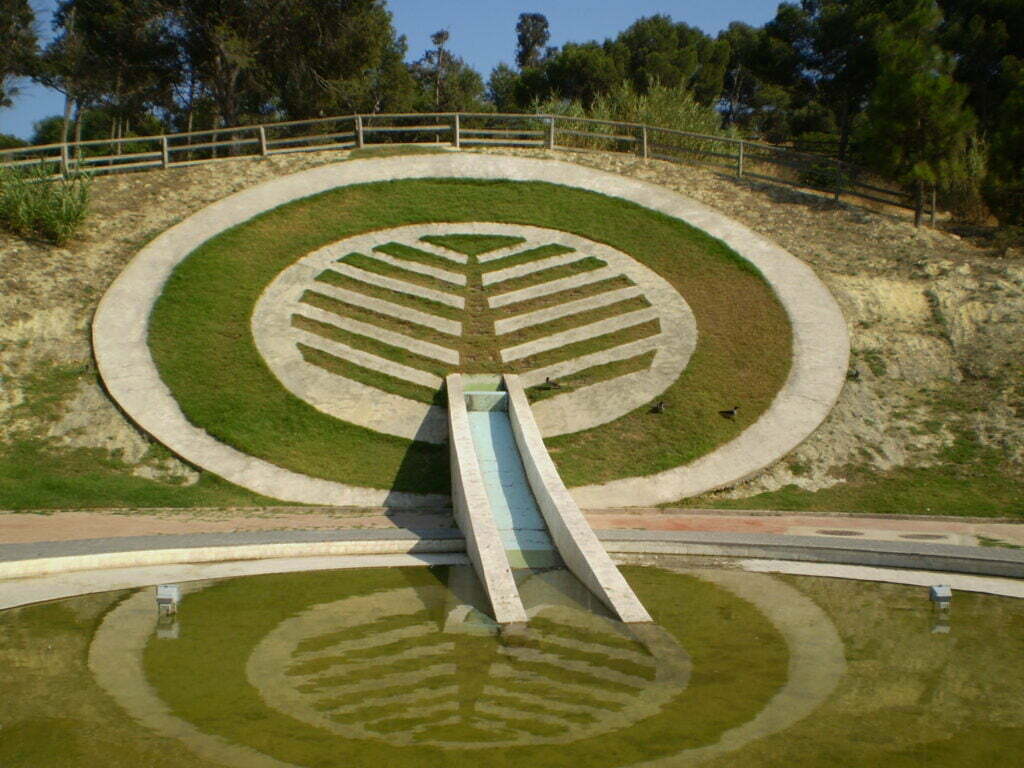



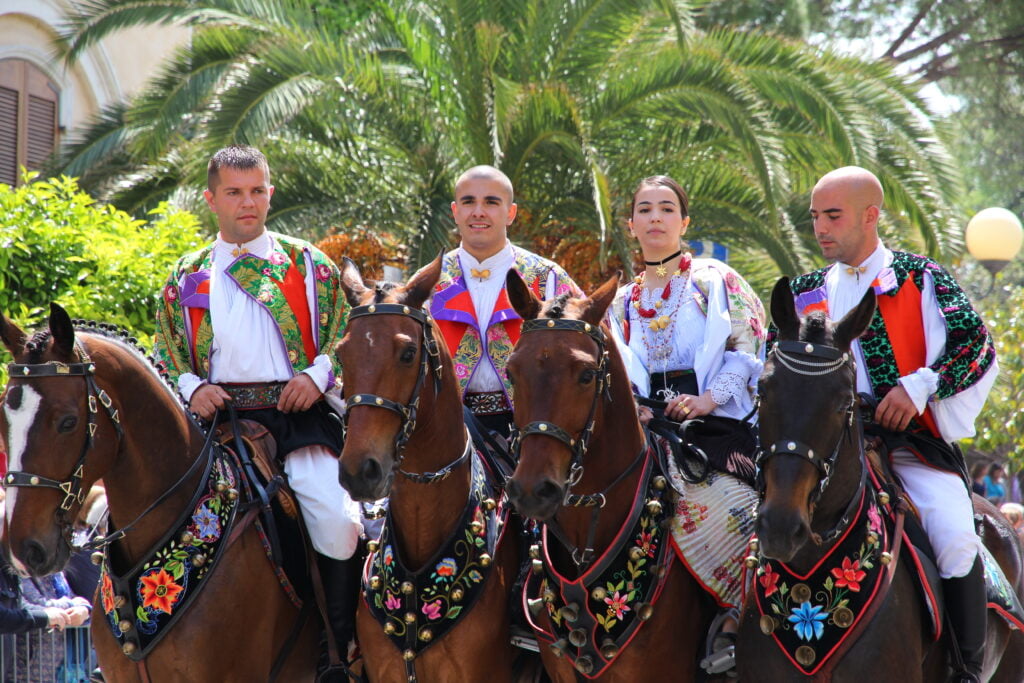



Food is another cornerstone of Sardinian identity. Freshly baked breads, succulent roasted meats flavored with fragrant herbs, and the island’s signature pecorino cheese tantalize the taste buds. Don’t miss fregola, a Sardinian pasta made from semolina dough rolled into tiny balls, a culinary inheritance from the island’s Phoenician past.
Sardinian artisans keep ancient traditions alive through their masterful craftsmanship. From intricate filigree jewelry crafted from silver to intricately woven carpets adorned with vibrant colors, each piece is a skill passed down on the new generations.
Language is the soul of any culture, and Sardinian is no exception. This unique Romance language, spoken by about 1 million people, is a fascinating blend of Latin influences and pre-Latin languages spoken by the island’s earliest inhabitants. Exploring Sardinian dialects is like deciphering a secret code, offering a glimpse into the island’s deep-rooted heritage.
Sardinia’s culture isn’t a museum exhibit; it’s a living, breathing entity. Witnessing a traditional festival, indulging in a hearty Sardinian meal, or simply conversing with a local in their native dialect – these are the experiences that truly bring the island’s soul to life.
Tourism
Sardinia isn’t just a destination; it’s a promise whispered by the turquoise waves lapping at its shores. This Mediterranean gem beckons travelers with a vast set of experiences, from sun-drenched beaches to ancient ruins whispering tales of bygone eras.
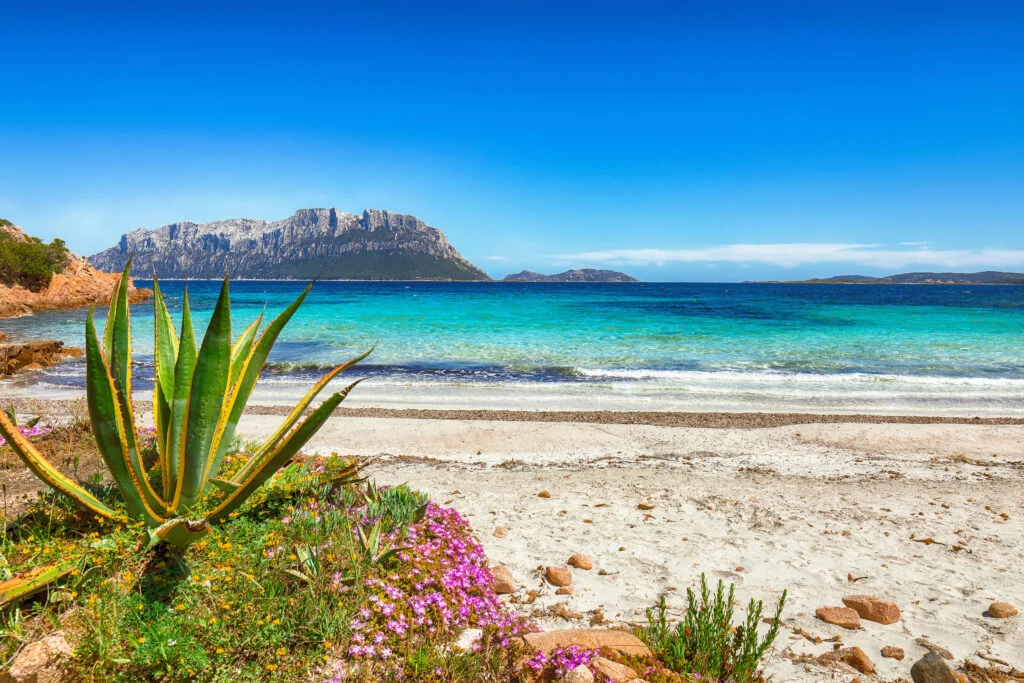

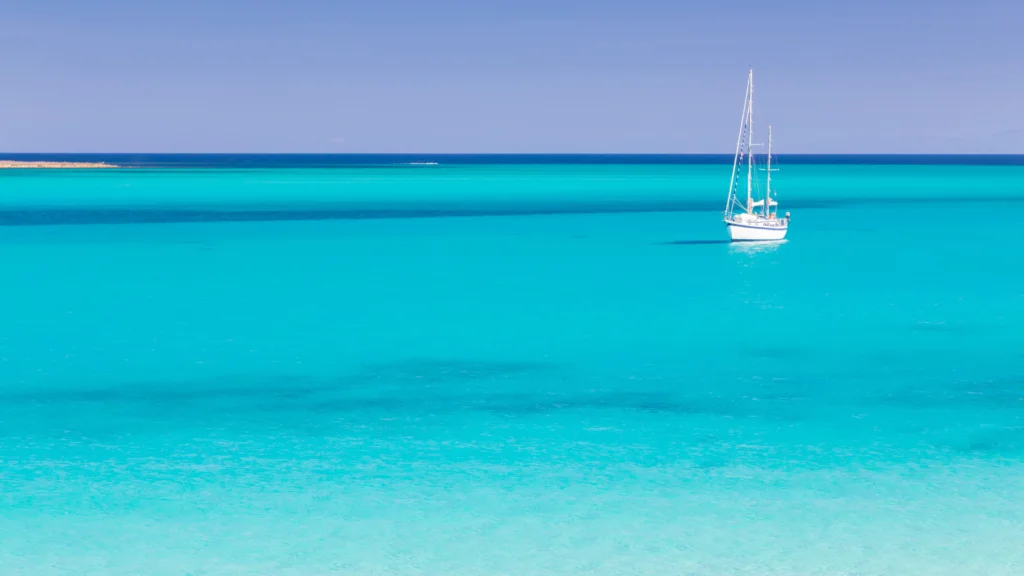

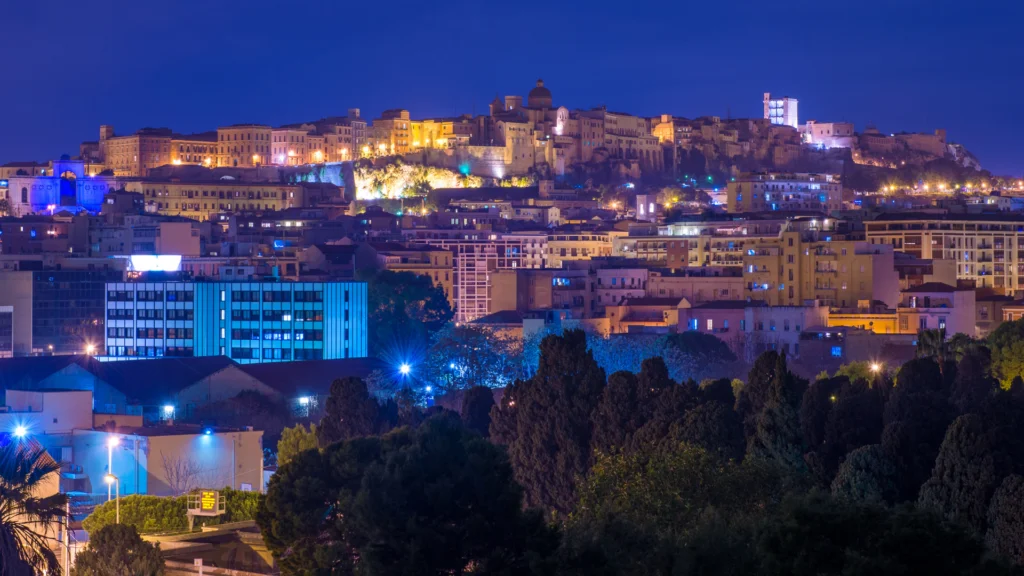

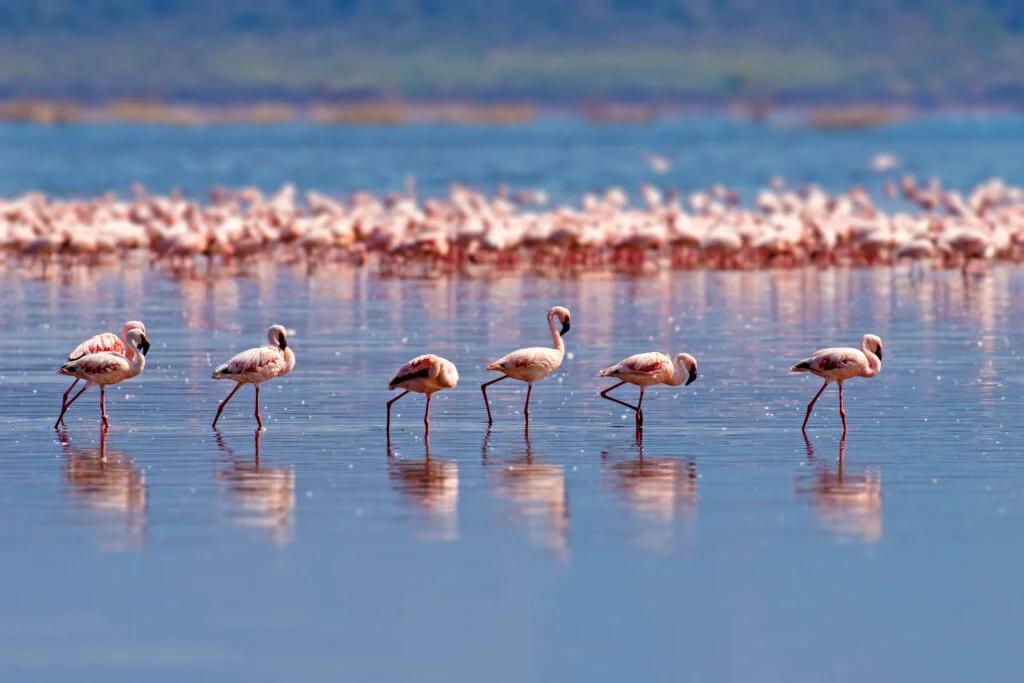

Beach Bliss: Sardinia boasts a coastline sculpted by nature, offering a haven for every beach bum. The iconic Costa Smeralda, with its emerald waters and granite boulders, is a playground for the jet set. Venture further north to Cala Gonone, where hidden coves and dramatic limestone cliffs create a scene straight out of a postcard.
Beyond the Beach: But Sardinia is more than just a beach bum’s paradise. Delve into the island’s rich history in Cagliari, the vibrant capital, where Roman amphitheaters stand sentinel and museums brim with archaeological treasures. Travel back in time at Barumini, where the UNESCO-listed nuragic complex of Su Nuraxi, a Bronze Age marvel, awaits exploration.
Cultural Gems: Alghero, a charming town with a rich Catalan heritage, offers a glimpse into a different side of Sardinia. Wander through its cobbled streets, admire the coral jewelry crafted by local artisans, and savor the unique flavors of Catalan-influenced cuisine.
Nature’s Embrace: Sardinia’s rugged interior shelters a haven for nature lovers. Hike through the pristine landscapes of Gennargentu National Park, where soaring peaks meet lush valleys. Kayak through the emerald waters of the Orosei Gulf Marine Protected Area, keeping an eye out for playful dolphins and majestic whales.
This is just a taste of what awaits in Sardinia. Whether you seek relaxation under the warm sun, a thrilling adventure in nature’s playground, or a journey through time, Sardinia has something for every explorer. So, pack your bags, embrace the spirit of discovery, and get ready to be enchanted by the magic of this unforgettable island.
Language
The history of the Sardinian language is rich and complex, reflecting the island’s diverse linguistic influences over time. Sardinian, also known as Sard or Sardo, is a Romance language spoken by the Sardinians on the island of Sardinia. The language has retained many archaic features and is considered one of the most conservative Romance languages, closely related to Latin.
The linguistic history of Sardinian includes various layers of influence. The Paleo-Sardinian layer, spoken in prehistoric and protohistoric ages, contributes to the unique character of the Sardinian lexicon within the Romance languages. Additionally, Phoenician-Punic influences are mainly found in southern and western Sardinia, while Greek Byzantine superstrate elements have left evident traces in the language. Over time, contributions from Italian, Catalan, and Spanish superstrates have further shaped the modern-day profile of the Sardinian lexicon.
Sardinian’s relative isolation from mainland Europe has played a role in preserving its distinct linguistic characteristics. The language has substratal influences from Paleo-Sardinian, which some scholars have linked to Basque and Etruscan. Adstratal influences from Catalan, Spanish, and Italian have also impacted the development of Sardinian.
Throughout history, Sardinia has experienced various colonizations and dominations that have influenced its linguistic landscape. From Byzantine rule to Catalan and Castilian influences during the late Middle Ages, followed by Italian dominance from the early 18th century onward, these political changes have left lasting imprints on the Sardinian language.
Sardinians normally speak italian, younger people can usually speak english with different level of profiency.
Sardinia is not an independent country but is an autonomous region of Italy. It is one of the twenty regions of Italy and has a special status within the Italian Republic, granting it a limited degree of autonomy in certain administrative matters. Despite having its own unique culture, language, and history, Sardinia is officially part of Italy.
The main cities in Sardinia include Cagliari in the South, Sassari in the North, and other significant cities like Nuoro, Oristano, Alghero, and Olbia. Cagliari is the capital of Sardinia and the largest city on the island, while Sassari is another prominent urban center.
The best time to visit Sardinia is between June and August if you prefer hot, sunny days and warm sea temperatures for beach activities. During these months, Sardinia experiences its hottest weather with average daily maximum temperatures over 30°C (86° F) in July and August. Be advised: we are having record high temperatures year after year in these months. It is not inusual to see peak of over 40°C (104° F).
If you aim to avoid crowds and still enjoy warm water, May and September are recommended as a good time to visit, offering fewer tourists and pleasant water temperatures. However, these months may have a slightly higher risk of bad weather compared to the summer months.
The other months of the year are great if you want to explore the region, or if you enjoy a quieter place. Even better: prices will be way lower than the hotter periods.
The most popular water activities to do in Sardinia during the summer include:
- Diving: Sardinia offers excellent diving opportunities with its clear Mediterranean waters and numerous diving spots like Villasimius, Carloforte, and Asinara Island.
- Canoeing and Kayaking: Enjoy exploring the beautiful coastline of Sardinia by canoeing or kayaking, offering a unique perspective of the island’s natural beauty.
- Kite & Wind Surfing: Sardinia’s windy conditions make it an ideal destination for kite and windsurfing enthusiasts, with spots like La Cinta in San Teodoro being popular for kite surfing.
- Water Skiing: Experience the thrill of water skiing in Sardinia, where you can glide over the water and enjoy the speed and excitement of this sport.
- Wave Surfing: For those who love surfing, Sardinia offers wave surfing opportunities where you can ride the waves along the coast, providing a fun and exciting experience.
- Canyoning: Explore the natural beauty of Sardinia through canyoning adventures, with spots like Monte Nieddu Rio Pitrisconi offering thrilling experiences for outdoor enthusiasts.
- Paddleboarding: Stand-up paddling is a popular water activity in Sardinia, providing a relaxing way to enjoy the sea and waves while getting a good workout.
Sardinia can be considered relatively expensive compared to some other destinations. But It always depends on zones: luxurious places like Costa Smeralda charge premium, while others require way less money to have a great experience.
Generally speaking, internal regions are cheaper and you can experience different kind of excursions. The south is also on the cheaper side and it has great beaches. The north is usually the expensive option, where you can find the more popular options. Note: popular doesnt’ always mean better than the other options.
Sicily may appeal more to those interested in history, cultural exploration, and diverse city experiences, while Sardinia might be preferred by those seeking pristine beaches, exclusivity, and natural beauty. The choice between Sicily and Sardinia comes down to personal preferences. Both islands offer unique experiences and attractions that cater to different tastes.
Sicily:
- Cultural Richness: Sicily boasts a rich history, diverse culture, and a wide array of historical sites and cities like Palermo, Catania, and Siracusa.
- Beaches: Sicily has beautiful beaches like Isola Bella off Taormina and Cefalú.
- Cuisine: Sicilian cuisine is renowned for its savory dishes like eggplant caponata and pesce di spada (swordfish), as well as delicious desserts like cannoli.
Sardinia:
- Beaches: Sardinia is famous for its stunning beaches, including La Pelosa and Cala Luna, often compared to the Caribbean.
- Exclusivity: Sardinia offers luxury resorts, secluded beaches, and exclusive services, making it an ideal destination for couples and honeymooners.
- Natural Beauty: The island’s landscapes are breathtaking, with pristine coves, turquoise waters, and dramatic mountain backdrops.
Sardinia is famous for several reasons, making it a popular destination for tourists and travelers:
- Natural Beauty: Sardinia is renowned for its incredible natural beauty and diverse landscapes. The island features towering mountain ranges, pristine beaches with turquoise waters, fertile rolling hills, unique rock formations, and impressive granite landscapes sculpted by erosion over time.
- Cultural Heritage: The island preserves its cultural heritage through traditional handicrafts like colorful rugs, woven baskets, and carved wooden masks. Sardinia also celebrates unique festivals and feasts infused with local culture, offering visitors a glimpse into the island’s vibrant traditions.
- Cuisine: Sardinian cuisine is another highlight, relying heavily on local seafood, strong cheeses made from sheep’s milk, native wines like Cannonau, and traditional dishes such as bottarga (cured fish roe) and malloreddus (pasta shells). Food enthusiasts can savor these authentic flavors that reflect the island’s culinary heritage.
- Outdoor Activities: Sardinia is a paradise for outdoor sports and activities, offering opportunities for hiking along scenic trails like the Selvaggio Blu, diving in marine reserves, rock climbing on impressive granite formations, and enjoying water sports along its stunning coastline.
- Rich History: Sardinia boasts a long and varied history, with ancient indigenous Nuragic people flourishing around the 18th century BC. This historical depth has left the island with thousands of historical landmarks and sites, attracting archaeologists and history enthusiasts worldwide.
Some traditional dishes to try in Sardinia include:
- Malloreddus alla Campidanese: Also known as “gnocchetti sardi,” malloreddus are a small pasta served with a “campidanese” sauce made of pork sausage, tomatoes, and saffron, topped with pecorino cheese.
- Fregola con le Arselle: Fregola is a unique Sardinian pasta similar to couscous, often paired with small flavorful clams and sprinkled with bottarga.
- Porceddu: A well-known Sardinian dish featuring roast suckling pig prepared over a fire until tender and crispy, typically found in the summer.
- Seadas: A famous Sardinian dessert made by filling thin dough with a mixture of mild cheese cooked with lemon peel and sugar, then deep-fried and served with local honey.

